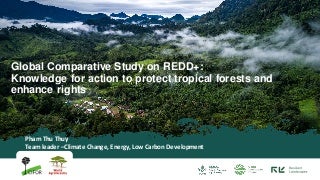To avert catastrophic climate change, fossil fuel emissions must be cut, but energy demand is tipped to rise by 45 percent from 2013 levels in 2040, according to the International Energy Agency. Under a business-as-usual scenario, this would prompt a 40 percent rise in carbon dioxide emissions, making the need for renewable energies more pressing than ever. Bioenergy, which is energy produced from biological sources, offers a compelling alternative which is estimated to have the capacity to meet at least 25 percent of global demand. But it is no silver bullet. In the tropics, most biofuel is made from oil palm, which grows quickly and produces high yields. However, clearing forests for oil palm monoculture results in a loss of ecosystem functions, and over time the plantations become less productive. What is worse, the trees can’t grow on swampy peatland soils, so these are often drained for plantations – releasing vast amounts of carbon dioxide into the atmosphere in the process.
-
 Restoration
Restoration
-
 Plantations and tree crop commodities
Plantations and tree crop commodities
-
 Enhanced nutrition and food security
Enhanced nutrition and food security
-
 Biodiversity, safeguarding and conservation
Biodiversity, safeguarding and conservation
-
 Nationally determined contributions
Nationally determined contributions
-
 Bioenergy and biomaterials
Bioenergy and biomaterials
-
 Blue carbon and peatlands
Blue carbon and peatlands
-
 Climate change adaptation
Climate change adaptation
-
 Landscape governance
Landscape governance
-
 Gender
Gender
-
 Silvopastoral systems
Silvopastoral systems
-
 Market-based agroforestry-forestry
Market-based agroforestry-forestry
-
 Farm-forest policy interface
Farm-forest policy interface
-
 Agroecology
Agroecology
-
 Livelihood trajectory modelling and assessment
Livelihood trajectory modelling and assessment
-
 Inclusive finance and business models
Inclusive finance and business models
-
 Innovating finance for sustainable landscapes
Innovating finance for sustainable landscapes
-
 Public and private commitments to zero deforestation
Public and private commitments to zero deforestation
-
 Orphan tree crops
Orphan tree crops
-
 Effectiveness of approaches to sustainable supply
Effectiveness of approaches to sustainable supply
-
 Quality of FTA research for development
Quality of FTA research for development
-
 Sentinel landscapes
Sentinel landscapes
-
 Foresight
Foresight
-
 Seeds and seedlings delivery systems
Seeds and seedlings delivery systems
-
 Smallholder tree-crop commodities
Smallholder tree-crop commodities











